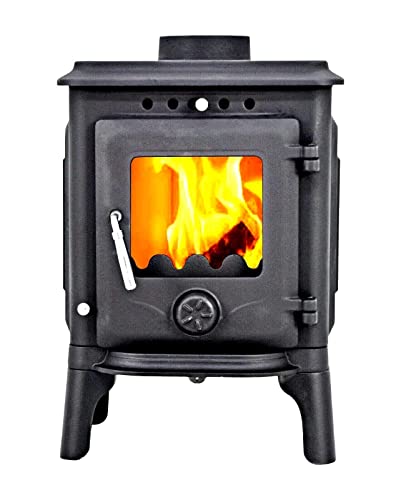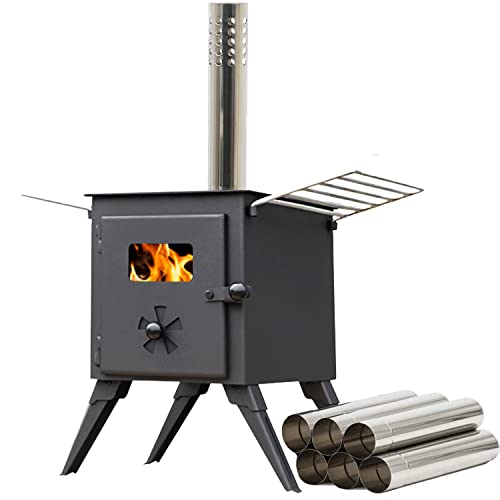A Proactive Rant About Stove Wood Burning
페이지 정보
작성자 Van 작성일24-06-04 08:44 조회30회 댓글0건본문
 How to Properly Start a Wood Burning Stove
How to Properly Start a Wood Burning StoveWood stoves can be a great option to conserve energy and heat rooms. They do require some maintenance.
 A majority of modern wood stoves comply with EPA emission guidelines. You can look for an EPA sticker on the grate or underneath it to make sure your stove doesn't emit harmful pollutants.
A majority of modern wood stoves comply with EPA emission guidelines. You can look for an EPA sticker on the grate or underneath it to make sure your stove doesn't emit harmful pollutants.How to start a Wood Fire
The smell and the sound of a fire can be a welcome addition in any house. It is essential to understand how to build a fire on your stove. Incorrect methods can result in an unburned fire that doesn't burn effectively and can cause creosote or smoke. The tips below will help you begin an efficient fire that will heat up your home quickly and effectively.
Check the condition of your coals and logs before you begin a fire. If they are wet, it will smother your fire and prevent the proper burning. It is possible to open the chimney to get rid of any ash that has fallen into the stove.
Begin by placing a handful of small wood burner, dry pieces of newspaper into your stove. This will help to ignite the sparks. Once they start to burn, add another layer of larger pieces to the top of the pile. This should be done with an arc pattern so that there is air between each piece.
If your wood stove is equipped Ultimate Outdoor Cooking with Portable Wood Stove an automatic control for combustion, it will automatically feed air to the fire as it grows. This will allow the fire to burn for a long time without you having to open the stove's door often to keep it in check.
It is essential to avoid using too much tinder, as this can lead to the fire burning at an extremely high rate and fails to utilize the fuel as efficiently as possible. Once you've made a solid base in your stove with sparks, tinder and kindling to start the main flame, you can do this by laying down two large base logs on the grate. Next, place a layer of smaller logs parallel to these and on the top of the base logs. This method of building an ember called a "top-down" fire will result in an effective and long-lasting fire that will not engulf the larger base logs.
Close the damper after the fire is established and kept it shut. The fire could be smothered if you open the damper before it is fully established. This can also affect the effectiveness of the fire.
Add Wood
Stoves are not just beautiful home decor pieces They can also help you save money by providing efficient wood heating. They can be utilized together with a central heating system or furnace to provide additional heat in large houses. The latest stoves that are clean-burning use a superior combustion principle that differentiates the burning of volatile compounds from combustible gasses and tar by supplying air in two distinct stages. The first stage allows the combustion of volatile compounds and the second provides fresh air that is pre-heated. This improves combustion and decreases the odors.
The amount of heat you will get from your stove is contingent on the type of wood used as well as the amount of moisture in it and the size of the logs. The logs should be stored in a well-ventilated area for a period of time before you try to burn them, to give the wood time to dry. If the logs are wet they will release plenty of steam that is essentially wasted energy.
It is best to add wood to the pile at intervals, not all at all at. In addition, adding too much wood at once could cause the temperature to rise within the firebox, creating a vortex which pulls smoke and volatile compounds that are not burned back into the flames. This could decrease the effectiveness of your stove.
Avoid burning other combustibles in your stove, such as paper or cardboard because they are not wood. They have different physical properties and cannot be burned without causing dangerously high temperatures. Also, you should not use compressed combustibles like wood briquettes, as they have a distinct chemical and physical properties from real firewood and aren't suitable for burning in wood-burning stoves.
It is crucial that a professional install and test your wood burning stove. A certified WETT technician will test the installation for proper operation and safety and also ensure that your chimney is working properly. These professionals offer maintenance services for your chimney and stove to ensure they are in good condition. They can look for leaks in the areas connected to your chimney and fix any problems they find. They will also ensure that all house occupants understand and comply with the fire evacuation procedures in the event of an emergency.
Adjusting the Damper
A damper regulates how much heat escapes to the chimney when you're not using your stove. Additionally, it can also help you to control the flame. If the flue opens but the damper is not closed, the fire will not burn properly and smoke will pour into your home. You can adjust the damper to ensure the best flames by experimenting with different settings.
Typically, you should keep the damper open enough to let air in and out of the flue when a fire is burning. This will allow the fire to start and remain lit for a number of hours. The proper opening will keep the fire from being starved of air and prevent it from blowing out smoke.
In order to properly adjust your damper, you have to first make sure the fireplace is preheated and the wood stove is warm. This will ensure the chimney is warm, and that it has a good draft. After these steps are completed, the damper on the wood stove can be adjusted.
After the fire has burned for a while, you should close the damper about three quarters of the way. This will stop warm air from the room from going into the chimney, while allowing the smoke to escape from the wood stove.
This is the most effective way to keep your fire burning and to prevent it from becoming too hot. If you close the damper too much, it could stop the draft from working, but if it is too open, a cold wind could blow through your home.
You can determine how much the damper is open by placing your hand on the top of the inside of the flue pipe. If you feel a slight breeze pressing against your hand, it's probably in the open position.
The damper settings can differ between stoves and even among different types of wood. Experimenting with the various settings will give you an idea of what to look for, but you will need to adjust it until you have found the ideal setting for your stove.
Clean Up
It is crucial to clean your chimney and stove after an incident. This can reduce the chance of a fire in the chimney, which is the primary cause of fires that are caused by wood stoves. Creosote is a sticky material that accumulates on the inside of the stovepipe and can be extremely hazardous. Unburned and moist particles of wood that cannot escape the fire are responsible for this chemical. It could also be caused by improperly lit fires.
A regular cleaning schedule can help prevent the buildup of creosote. The most effective method for fireplacesandstove doing this is by sweeping the chimney at least once a year. It is recommended that you have your fireplace and stove professionally inspected and cleaned at least once a year.
It is also an excellent idea to clean the ash tray and the grates regularly. It is a good idea to use only seasoned wood for burning, as it will create less creosote and ash. It is also recommended to avoid burning cardboard, paper plastic, and other waste items. These materials can release harmful chemicals into the flue and air, which could be released in your home.
The glass on the wood burning stove has to be cleaned frequently as well. The majority of modern wood stoves have self-cleaning windows, which means they do not require as much cleaning. If you're unable to clean the glass of your wood stove as clean as you would like There are stove glass cleaners can be used on the window.
Other tips to maintain your wood stove are to turn the vent off when you're not using it, and opening the door or window to increase air flow. This will ensure that the fire is burning longer and more efficiently. The wood stove will not have to perform as hard to circulate air. It is advisable not to stack logs or place them on the fire for a long period of time. This could cause warping and splits. In addition, it is a good idea to avoid using compressed combustible wood logs in your wood stove as the paraffin they contain can melt and flow down the flue which could damage it.
댓글목록
등록된 댓글이 없습니다.

